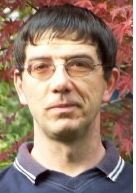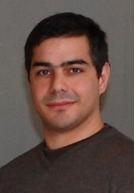Modeling and Theoretical Chemistry group
Published on 17 July 2019
Body text 1

| |
Serge Crouzy
Group leader
CEA Researcher
Phone: (33) 4 38 78 29 63 | |

| |
Yohann Moreau
Assistant Professor
Université Grenoble Alpes
Phone: (33) 4 38 78 29 62 |
|
|
 Address
Address
Laboratoire Chimie et Biologie des Métaux
Institut de Biosciences et Biotechnologies de Grenoble
CEA-Grenoble
17 avenue des Martyrs
38 054 Grenoble cedex 09
 Past collaborators and students:
Past collaborators and students:
• Postdocs: Jean-François Fuchs, Hristo Nedev, Nicolas Sapay
• PhD students: David Poger (2005), Karthik Arumugam (2009), Cheickna Cissé (2012), Rolf David (2017), Serge Nader (2018), Jérémy Caburet (ongoing)
• Students: David Mayes, Mael Bosson, Lindsey Flanagan, Justine Lévêque, Magda Benisz, Antoine Fouquet, Silouane Gérin, Emilie Garcin, Eva Gallego
 Main activity
Main activity
Our primary goal is to support the different groups at the Laboratory of Chemistry and Biology of Metals by providing theoretical models and expertise in synchrotron techniques that can help to answer open questions in biology or chemistry.
We also conduct collaborative projects with various teams of biologists, chemists and computer scientists in the Grenoble area as well as with international partners.
We manage several computing techniques from bioinformatics (î screening) to the most advanced QM/MM studies (reactivity of metal sites in their metalloprotein environment). We are able to predict protein structure and interactions using standard molecular mechanics (MM) and molecular dynamics (MD), in both all atom and coarse grained simulations. We develop various programs: In particular, S. Crouzy develops a molecular visualization program and many tools to help analyze MD results and M. Field develops the well-known QM/MM
program pDynamo. Y. Moreau is familiar with metadynamics techniques and G. Veronesi holds a strong expertise in X-ray Absorption Spectroscopy (XAS) and X-Ray Fluorescence (XRF) imaging data acquisition and analysis, which provide unique information about the structure of protein metal sites and metal distribution in cells, respectively.
Top page